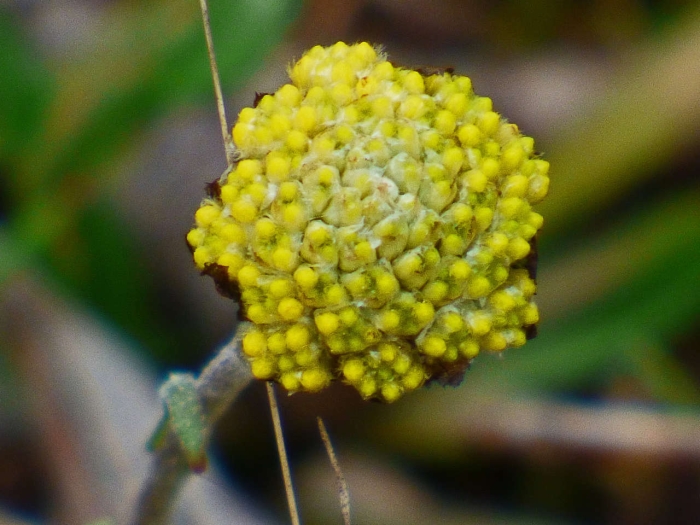Billy Buttons
(Craspedia variabilis)
Billy Buttons (Craspedia variabilis)
/
/

Thomas Nataprawira
CC BY 4.0
Image By:
Thomas Nataprawira
Recorded By:
Copyright:
CC BY 4.0
Copyright Notice:
Photo by: Thomas Nataprawira | License Type: CC BY 4.0 | License URL: http://creativecommons.org/licenses/by/4.0/ | Rights Holder: Thomas Nataprawira | Publisher: iNaturalist | Date Created: 2015-09-06T12:23:17Z |

























Estimated Native Range
Summary
Craspedia variabilis, commonly known as Billy Buttons, is a perennial herb, though sometimes behaving as an annual, native to a variety of temperate habitats in Australia, including grasslands, open woodlands, and alpine regions, except for the Northern Territory. It typically grows to a height of 4 to 24 inches (10 to 60 centimeters) and is characterized by its spoon-shaped basal leaves and striking, spherical heads of golden-yellow flowers that bloom from early spring to early summer. The flowers are borne atop long, slender stems and are highly attractive to pollinators.
Billy Buttons are valued for their unique, globe-shaped blooms which make excellent cut flowers and are often used in dried floral arrangements. They are relatively easy to grow and maintain, making them a popular choice for ornamental gardens, rockeries, and as a border plant. In cultivation, they require full sun exposure and prefer well-drained soils, tolerating a range of soil types from sandy to loamy. While generally pest-free, they can occasionally suffer from root rot if overwatered or planted in poorly draining soils. It is important to avoid excessive moisture to prevent such issues.CC BY-SA 4.0
Billy Buttons are valued for their unique, globe-shaped blooms which make excellent cut flowers and are often used in dried floral arrangements. They are relatively easy to grow and maintain, making them a popular choice for ornamental gardens, rockeries, and as a border plant. In cultivation, they require full sun exposure and prefer well-drained soils, tolerating a range of soil types from sandy to loamy. While generally pest-free, they can occasionally suffer from root rot if overwatered or planted in poorly draining soils. It is important to avoid excessive moisture to prevent such issues.CC BY-SA 4.0
Plant Description
- Plant Type: Herb
- Height: 1-1.5 feet
- Width: 1-1.5 feet
- Growth Rate: Moderate
- Flower Color: Yellow
- Flowering Season: Summer
- Leaf Retention: Evergreen
Growth Requirements
- Sun: Full Sun
- Water: Medium, High
- Drainage: Medium, Fast
Common Uses
Border Plant, Drought Tolerant, Low Maintenance, Rock Garden
Natural Habitat
Native to grasslands, open woodlands, and alpine regions across various temperate habitats in Australia, except for the Northern Territory
Other Names
Common Names: Woollyheads, Drumstick Flower
Scientific Names: , Craspedia variabilis,
GBIF Accepted Name: